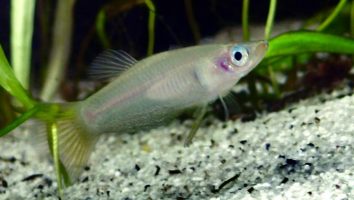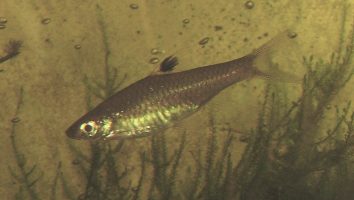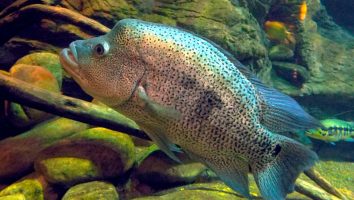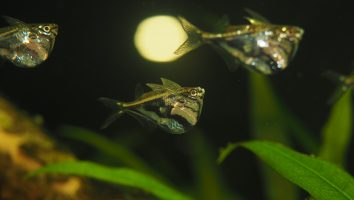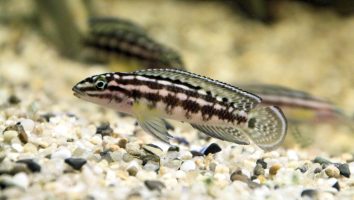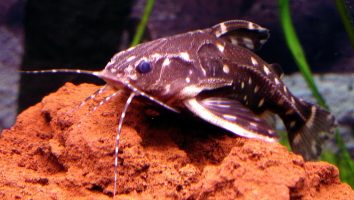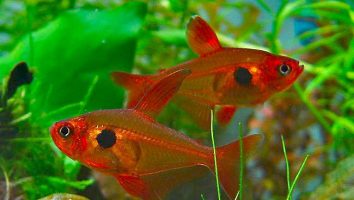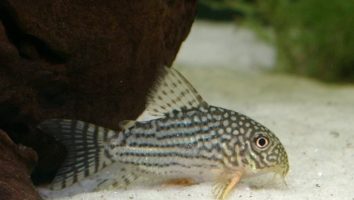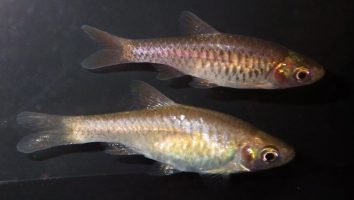The diamond tetra is a beautiful freshwater fish that is perfect for beginner aquarium keepers. They are easy to care for and have a peaceful temperament, making them a great addition to any community tank.
This guide will teach you everything you need to know about diamond tetra care. You’ll learn about their diet, size, lifespan, and more!
Table of contents
Species overview
Diamond tetras (Moenkhausia pittieri) are found throughout a large portion of South America. Their natural habitat includes countries such as Brazil, Colombia, Ecuador, Peru, and Venezuela.
They live in slow-moving rivers and streams that are densely packed with vegetation. This is something to keep in mind when setting up their tank because you’ll want to make sure there are plenty of plants for them to hide in.
In the wild, these fish eat a diet that consists mostly of small insects and other invertebrates.
Diamond tetras are a popular choice for freshwater aquariums because of their beautiful blue and green coloration. They are relatively peaceful fish that can get along with most other tank mates.
Appearance
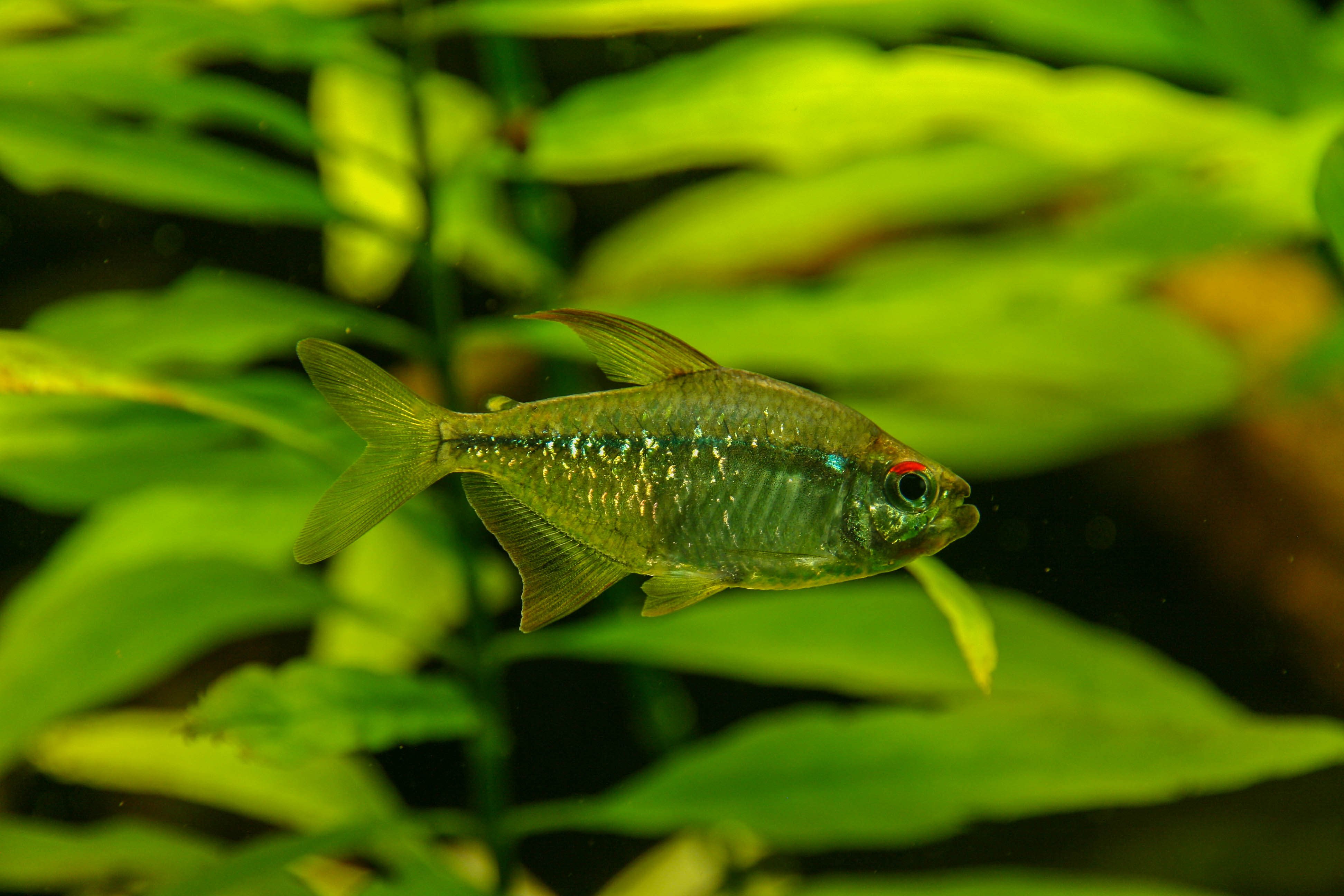
The first thing you’ll notice about the Diamond Tetra is their beautiful coloration. These fish are a bright silver with a blueish tinge. On their sides, you’ll find a series of black stripes that start from the gill plate and go all the way to the tail.
Each stripe is separated by a thin line of silver. The number of stripes will vary from fish to fish, but they usually have around 5-7.
The fins on the Diamond Tetra are all pretty similar in size and shape. The dorsal and anal fins are both tall and thin. They start about halfway back on the body and extend almost to the end of the tail.
The caudal and pectoral fins are also tall and thin. The caudal fin is slightly forked and has a slight point at the end.
The Diamond Tetra has a long and thin body that tapers off at the end. This gives them a sleek and hydrodynamic look that allows them to swim quickly.
Lifespan
The average lifespan of a Diamond Tetra is 5 to 7 years. These fish are relatively long-lived compared to other species of Tetra.
Water quality is the primary factor that determines how long your Diamond Tetra will live. These fish are very sensitive to changes in their environment and even small fluctuations can cause stress.
Other factors that can impact their lifespan include diet, tank mates, and general level of care.
Size
The average Diamond Tetra size is between 2 and 3 inches long, with males being on the smaller end of that spectrum and females typically getting up to 3 inches. Despite their small size, these fish still need a bit of space to swim and should be kept in an aquarium that’s at least 10 gallons.
Tank
Tank Size
The minimum tank size for diamond tetras is 10 gallons. If you’re looking for a small freshwater fish that can fit in an average-sized tank, this is a good option.
You can keep a school of 5-7 diamond tetras in a 10 gallon tank, but we recommend going up to a 20 gallon tank if you can. This will give you some extra space and allow you to add a few more fish to your school if you want.
Water Parameters
The diamond tetra (Moenkhausia pittieri) is a freshwater fish that’s native to the Orinoco River Basin in South America.
In the wild, they live in slow-moving waters with plenty of vegetation. The water is typically soft with a neutral to slightly acidic pH.
In captivity, they’re relatively easy to care for as long as you provide the proper environment. They’re a peaceful community fish that does well with other tetras, danios, and rasboras.
Here are a few water parameters to keep in mind when setting up a diamond tetra aquarium.
- Water temperature: 72 to 82 degrees Fahrenheit
- pH levels: 6.0 to 7.8
- Water hardness: 2 to 12 dGH
- Alkalinity Levels: 4-8 dKH
What To Put In Their Tank
Decorating the inside of a diamond tetra’s tank is a pretty simple affair.
Since these fish come from calm waters in the wild, they don’t need any fancy ornaments to feel comfortable.
Some rocks, driftwood, and plants are all you need to create a suitable environment for them.
As for the plants, we recommend sticking to floating varieties. This will give them someplace to hide if they feel the need and keep the inside of the tank looking nice and full.
The substrate can be whatever you want. Gravel is always a good choice, but sand can work well too.
Common Diseases
The diamond tetra is a freshwater fish that is relatively hardy and resistant to disease. However, this doesn’t mean that they’re immune to sickness.
There are a few diseases that these fish are susceptible to, the most common being ich. Ich is a parasite that can cause a lot of problems for your fish if it’s not treated quickly.
The most obvious sign of ich is the presence of white spots on the body of your fish. If you notice this, it’s important to act fast and start treatment immediately.
Other diseases that these fish can get include infections, bacterial diseases, and parasites. Most of these can be treated relatively easily if they’re caught early.
The best way to prevent these diseases is to maintain clean and stable water conditions in your tank. This will make your fish less likely to get sick in the first place.
Behavior & Temperament
The diamond tetra is a beautiful, peaceful fish that is perfect for beginner aquarists. These little guys are social creatures that do best in groups. In the wild, they live in schools of hundreds of fish, so a group of at least six is ideal.
They are very active fish that love to swim. You’ll often see them chasing each other around or swimming in unison with their schoolmates. When they’re not swimming, they like to rest near the bottom of the tank on plants or rocks.
Diamond tetras are not aggressive fish and get along well with other peaceful species. They are not timid, so they won’t get bullied by other fish. However, they are small fish and can be eaten by larger fish, so it’s important to choose tank mates carefully.
Tank Mates
The best tank mates for diamond tetras are other small, peaceful fish. These fish are native to the Amazon basin, so they’re used to living in warm water.
They do best in a tank with other fish that have similar needs. That being said, there are a few different species that make good tank mates.
Some good options include:
- Neon Tetra
- Cardinal Tetra
- Ghost Tetra
- Rummy Nose Tetra
- Black Neon Tetra
- Harlequin Rasbora
- Corydoras Catfish
- Otocinclus Catfish
Breeding
The diamond tetra is a beautiful freshwater fish that is relatively easy to breed in the home aquarium. These fish are not picky eaters and will readily accept most foods. They are also not too demanding when it comes to water conditions.
To breed diamond tetras, you will need a tank that is at least 20 gallons in size. The tank should be well-filtered and have a good amount of hiding places. These fish like to have plenty of plants in their tank, so live plants are a good idea.
When it comes to water conditions, aim for a pH of 6.5-7.5 and a water temperature of 75-82 degrees Fahrenheit.
To trigger spawning, you will need to slowly increase the water temperature over the course of a week or so. Once the water temperature has reached 82 degrees, you should see the fish start to spawn.
The female diamond tetra will lay her eggs on plants or other surfaces in the tank. The male will then fertilize the eggs.
Once the eggs have been fertilized, the parents should be removed from the tank. The eggs will hatch in 24-36 hours.
The fry will be very small and will need to be fed microscopic foods for the first few days. After that, you can start feeding them baby brine shrimp or other small live foods.
Conclusion
The diamond tetra is a beautiful freshwater fish that is perfect for beginner aquarists. They are relatively easy to care for and are very peaceful, making them a great addition to any community tank.
One of the best things about diamond tetras is that they are very hardy fish. This means that they can tolerate a wide range of water conditions and are less likely to get sick.
If you’re looking for a beautiful and low-maintenance freshwater fish, the diamond tetra is a great option!

